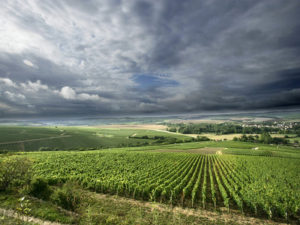 On my very first trip to the Willamette Valley (my pre wine-as-a-career days), I stopped by the tasting room at Domaine Drouhin. The people were just so lovely and cordial. I thought to myself, even if I don’t like these wines, I am going to purchase some because of my experience. Then, I found out that they were members of the Drouhin family who, after four generations in the wine industry are one of the three largest producers of wine in Burgundy. They were so gracious and understated, which made my visit all the more endearing. Oh, and did I mention that the wines are exceptional? I fell in love with the Laurène at first taste. It was elegant and sensual. I was hooked.
On my very first trip to the Willamette Valley (my pre wine-as-a-career days), I stopped by the tasting room at Domaine Drouhin. The people were just so lovely and cordial. I thought to myself, even if I don’t like these wines, I am going to purchase some because of my experience. Then, I found out that they were members of the Drouhin family who, after four generations in the wine industry are one of the three largest producers of wine in Burgundy. They were so gracious and understated, which made my visit all the more endearing. Oh, and did I mention that the wines are exceptional? I fell in love with the Laurène at first taste. It was elegant and sensual. I was hooked.
With 182.5 acres (73 hectares) and 90 appellations of mostly Grands Crus and Premiers Crus, Maison Joseph Drouhin is nothing short of impressive. They have presence in Chablis (95 acres/38 hectares), Côte de Nuits and Côte de Beaune (80 acres/32 hectares) and Côte Chalonnaise (7.5 acres/3 hectares). The caves and cellars span about 2.5 acres (1 hectare) and were built between the 13th and 18th centuries. In total, Domaine Drouhin, consists of 90 acres, primarily Pinot Noir, with 13.5 acres of Chardonnay planted right alongside. Combined, Maison Joseph Drouhin and Domaine Drouhin have 272.5 acres (109 hectares).
I recently had the privilege of spending some time with Véronique Drouhin-Boss, head winemaker for both Maison Joseph Drouhin and Domaine Drouhin. We’ll learn more about Véronique’s favorite wines right now, her foodie picks in both the Willamette Valley and Burgundy, what it was like to grow up in such a famed family in the wine industry, her accomplishments, her thoughts on recent vintages, and, for the truly hard core oenophiles, details on the viticulture and vinification of their wines.
Véronique on the Spot – Her Faves
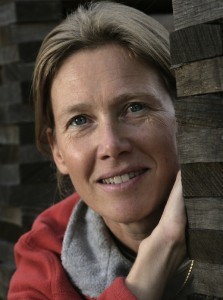 Véronique travels quite a bit, but maintains her primary residence in Burgundy to have as much time as she can with her husband Michel and her three teenagers, Laurène, Louise and Arthur. She spends about one month during harvest in the Willamette Valley and returns to Oregon typically about 2 times afterward for bottling. I love wine. I love food. I was not going to let a golden opportunity go by without asking Véronique to comment on her favorites for both. I was also curious to learn if there was anything else Véronique was passionate about outside of the vine.
Véronique travels quite a bit, but maintains her primary residence in Burgundy to have as much time as she can with her husband Michel and her three teenagers, Laurène, Louise and Arthur. She spends about one month during harvest in the Willamette Valley and returns to Oregon typically about 2 times afterward for bottling. I love wine. I love food. I was not going to let a golden opportunity go by without asking Véronique to comment on her favorites for both. I was also curious to learn if there was anything else Véronique was passionate about outside of the vine.
Her Favorite Wines Right Now
Domaine Drouhin typically produces four different wines each year, three of which were named after her children. Arthur is a Chardonnay. Laurène and Louise are both Pinot Noir. Personally, I have adored the elegance of the Laurène for many years now. Louise it is less available. Veronique calls it the cherry on the cake “la cerise sur le gâteau,” made in more of a Grands Crus style. Louise is very complex. I asked her what her three teenagers thought about having wines named after them. She responded, “They think it is fun. They sometimes tease each other about which one tastes better.”
“Right now, I am really liking the 2006 Laurène (ST 91/WS 92, $65). I adore its elegance. It’s not too tannic or hard. I am very proud of the 2008 Arthur (2007 Arthur, ST 90, $27) too. As for Burgundy, Véronique loves the Chablis for its vibrancy, the Puligny-Montrachet for its elegance and the Beaune Clos des Mouches, especially the white, as it is unique and complex.” Beaune Clos des Mouches is an extraordinary little vineyard which has achieved mythical status for the Maison Joseph Drouhin. Beaune Clos des Mouches: 2007 Blanc ($95), 2006 Blanc (ST 90/WS 90, $91), 2005 Blanc (ST 89, $87); 2007 Rouge (ST 92, $85), 2006 Rouge (ST 91, $82) 2005 Rouge (ST 91/ WS 90 $92).
Favorite Places to Dine – Willlamette Valley and Burgundy
I asked Véronique where her favorite places to dine were in Oregon and Burgundy. While in Oregon, she said “I love going to Portland, but unfortunately, I don’t have much time to go. Some of our favorite restaurants in the Willamette Valley are Tina’s, Nick’s, The Dundee Bistro and Red Hills Provincial. Tina’s is consistently good. Nick’s is an Italian café with very good food. I like the Minestrone.” As for Burgundy, Véronique mentioned “Le Caveau des Arches. We go often. The chef is great, as is the wine list. It’s in a 15th century salon. It doesn’t have a [Michelin] star, but it’s star caliber. We are always welcome and it’s very good. Some of our other favorites are Je Jardin des Remparts and Le Bistrot du Bord de l’Eau.”
Activities Outside of the Vine
With 2 vineyards 8,500 Kilometers (5,300 miles) apart, 272.5 acres (109 hectares) of vines to make into wine and three teenagers, Véronique clearly has a lot to keep her busy. I read that she enjoyed gardening. I asked her if that was a euphemism for viticulture. She laughed and said “no” and that she truly enjoyed gardening outside of the vine, but ended up having a few uninvited visitors. “I hold true to my organic principles, but I end up growing a lot of food for the rabbits. They eat all of our vegetables and flowers, but what can I do? They are adorable to watch. My kids make fun of me.” Véronique also enjoys playing the piano (although she doesn’t have the opportunity to do this as frequently as she’d like), listening to classical music and getting together with friends.
A Family Legacy
What’s it like Growing up “Drouhin”?
The business has been in the family for 4 generations, starting with Véronique’s great-great-grandfather, Joseph. It is truly a family endeavor. While Véronique is tasked with the winemaking, each member of the family plays an integral role in the company. Frédéric drives the development of the company as President of the Executive Board. Philippe manages both estates. Laurent runs the U.S. marketing effort. Their father Robert, the visionary, ran the company from 1957-2003 and is now the President of the Control Board.
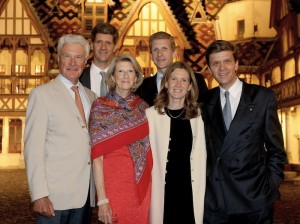 When you meet a member of the Drouhin family, it is apparent that their work ethic and commitment to the vine runs deep. I asked Véronique what it was like to grow up in such a household.
When you meet a member of the Drouhin family, it is apparent that their work ethic and commitment to the vine runs deep. I asked Véronique what it was like to grow up in such a household.
She responded, “When I was little, I thought it was the same for every kid – having these amazing bottles and sometimes enjoying them in a 14th century cellar, but then I realized how special and fortunate we were. My father was very smart. He built up our curiosity for wine. He’d say ‘let’s taste this one and try to find what it is all about.’ We’d sometimes have special wines on our birthday. Wine is for sharing and it is an experience. We were always happy to share.”
“I have learned so much over the years from lots of people in the industry who were of my father’s generation. They were always very generous with me. We had a sort of a ‘good grandfather’ named Henri Jayer. [He was a pioneer for many commonly used ideas in winemaking today (1) winemaking begins with the terroir and (2) he strongly opposed the use of chemicals.] Henri would always say ‘use your common sense.’ We had lots of chitchat. He shared wines with us and told stories to go along with these wines. It was special.”
Véronique, Creating a Legacy of Her Own
Under her father Robert’s leadership, the first woman oenologist in Burgundy, Laurence Jobard, ran their oenology lab. Véronique worked with Laurence from 1986-2005 and she still considers Laurence one of her mentors. Laurence and Véronique are trailblazers in an industry that is still fairly male dominated. Véronique commented, “Although I am still a minority, I can see a lot more women winemakers. Keep in mind, these are very small estates [in Burgundy]. It can be a physically taxing job involving lots of lifting and physical labor. That definitely influences a person’s career choice. When my father initially interviewed Laurence, she was very young. He realized what a great palate she had and how talented she was. Our company kept growing. He relied more on her and her abilities. She maintained the style [of the wine]. Interestingly enough, with four brothers, I am the one who ended up having the desire to make wines.  Winemaking is very demanding. It is very hard work. I worry all year round about the agriculture. It is an ongoing process and I can’t turn it off. Technology makes things a bit easier because even with extensive travel, I can always get in touch.” Laurence retired in 2006. Since 2006, Véronique works closely with Jerome Faure-Brac who is also integral to the family’s business. Véronique has a degree in Oenology from the University of Dijon, with an Advanced degree for her work with Pinot Noir.
Winemaking is very demanding. It is very hard work. I worry all year round about the agriculture. It is an ongoing process and I can’t turn it off. Technology makes things a bit easier because even with extensive travel, I can always get in touch.” Laurence retired in 2006. Since 2006, Véronique works closely with Jerome Faure-Brac who is also integral to the family’s business. Véronique has a degree in Oenology from the University of Dijon, with an Advanced degree for her work with Pinot Noir.
130 Years and Counting
This is a momentous year for the Drouhin Family. “This year, we will celebrate 130 years, going back to 1880. To celebrate, we might do something unique and special. We are thinking about making a special cuvée using a 1571 press. It would be a lot of work, but it would be very special working like the monks from the 16th century.”
And now… for the Hard Core Oenophiles….
Vintages – Véronique Weighs in
“Before going into the details of each of the recent vintages, even with the different soil, various weather patterns and the fact that Burgundy and the Willamette Valley are 8,500 Kilometers (5,300 miles) apart, remarkably, in most instances, when we’ve had a good year in one location, the same has held true for the other. Burgundy and Bordeaux are situated in the same country and are not that far apart relatively speaking, and this does not hold true.
2003 warm, same in both locations
2005 elegant and fabulous for both locations
2006 more challenging
2008 high acidity – good structure, tiny crop. In Oregon, the crop size was not as small as it was in Burgundy.
2009 large crop, much softer
2008 and 2009 were both very good vintages.”
Typically, when people think Burgundy, they think Pinot Noir or the beautiful whites of the Côte d’Or. I feel it necessary to highlight Chablis because if you haven’t tried it, you are missing an opportunity. 2008 was considered to be one of the greatest vintages for Chablis in the past 25 years. The Drouhin Family has about 100 acres in Chablis and recently launched a new line of labels with the Chablis Drouhin Vaudon. Chablis is 100% Chardonnay. “Unless it is a very warm year like 2003, all of our Chablis go through 100% malolactic fermentation. The Chablis and Chablis Premier Crus are all steel fermented with no oak at all. The Grand Crus from Chablis are barrel fermented and barrel aged, but with no oak. The concept of ‘mineral’… its true origin comes from Chablis. The vinification is meant to reflect the terroir. In Chablis, there is the highest level of Kimmeridge clay (the billions of petrified shells from the Jurassic era.” Try it. You’ll like it and you’ll thank me later.
A Day in the Life of a Winemaker
“My schedule is very different during harvest. If not traveling, typically, I work until 11AM. We taste from 11-12:30PM and we taste many different things. For example, we see if final cuvées need to be adjusted, or taste some the wines proposed. I have lunch – very French – and then I come back to the office. Each day is different. Tomorrow, I am spending the whole morning tasting white and reds. I also give some of the private tours and do some technical tastings because it is easier for me to talk about the wines since I am the winemaker. It takes time for these visits, but we try to make time because it is always a pleasure for me.”
Viticulture
The Drive Toward Organic and Biodynamic
Robert Drouhin was one of the first in Burgundy to embrace “culture raisonnée” (doing away with pesticides). “Early on, my father realized that the quality of the wine comes from the terroir and culture raisonnée was very important to obtain this. My brother Phillipe went a step further. We always work on the terroir… It is our mission. We need to make sure our wines reflect the terroir… At Maison Joseph Drouhin, we are biodynamic at all estates. At Domaine Drouhin, it is a live program where our current vineyard manager’s goal is oriented toward full adoption of organic practices, but we are not there yet.”
Willamette Valley versus Burgundy
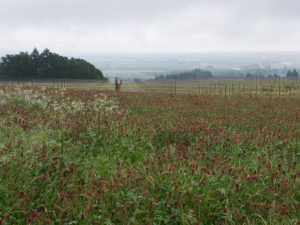 Although Oregon and Burgundy lie on the same parallel, the weather and soils are very different. Oregon is dry and warm most of the summer and Burgundy has its share of rain and hail. Oregon is very iron rich (Jory soil) because of the volcanic influence. Burgundy tends to have more chalk. Véronique elaborated, “Oregon has that cool breeze. Pinots need warm days and cool nights. It’s almost easier in Oregon than Burgundy because of the unwanted rain. The rains in Burgundy can sometimes bring about rot. Soil is very different in both areas. Our vineyard in the Willamette is 100% Jory soil versus the soil in Burgundy, which is limestone and marl. As such (for Pinot Noir), for color, our Oregon wines are darker in color than our Burgundies, which tend to be more ruby or reddish in color. On the nose, the terroir imparts more black fruits versus the red fruits you’d find on the nose of our Burgundies. There’s also a spiciness in Oregon wines that you rarely find in young Burgundy wines.”
Although Oregon and Burgundy lie on the same parallel, the weather and soils are very different. Oregon is dry and warm most of the summer and Burgundy has its share of rain and hail. Oregon is very iron rich (Jory soil) because of the volcanic influence. Burgundy tends to have more chalk. Véronique elaborated, “Oregon has that cool breeze. Pinots need warm days and cool nights. It’s almost easier in Oregon than Burgundy because of the unwanted rain. The rains in Burgundy can sometimes bring about rot. Soil is very different in both areas. Our vineyard in the Willamette is 100% Jory soil versus the soil in Burgundy, which is limestone and marl. As such (for Pinot Noir), for color, our Oregon wines are darker in color than our Burgundies, which tend to be more ruby or reddish in color. On the nose, the terroir imparts more black fruits versus the red fruits you’d find on the nose of our Burgundies. There’s also a spiciness in Oregon wines that you rarely find in young Burgundy wines.”
Densely Planted Vineyards
In Burgundy, the Drouhins densely planted their vines (approximately 5,000 vines per acre in Burgundy). In Oregon, the same holds true with approximately 3,100 vines per acre (vs. 800-1,400 in the rest of the Willamette Valley). They believe this amplifies the imprint of the terroir on the grapes. This ends up being a very costly endeavor, with lower yields, more vines and therefore, increased manual labor. Using their vineyards in Oregon as an example, each vine yields something like only ¾ of a bottle, yet their wines are not that much higher in price than many others from that area. I asked Véronique how they were able to achieve this. She replied, “It’s true. Our vineyard management adds to the cost. The viticulture is huge on the bottom line. If the end goal is the quality, we believe that’s the best thing to do. We care to ripen to perfection. Until the winery in the U.S. started to sell wine directly, we were barely profitable, but it was our decision.”
The Drouhin Family also cultivates its own plants and rootstocks. Véronique explained, “We were limited when we first arrived in the Willamette Valley. We use many different clones – as many as we can provided they are good. We believe that if you mix different qualities, it adds more complexity. For example, while some clones might be light on terroir, it may add structure to the wine. Other clones might be heavier on terroir. Others may provide elegance.”
Leaf Pulling
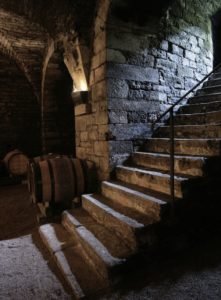 “We learned more about leaf pulling from Oregon. We are now using this technique in both Oregon and Burgundy. For Burgundy, it is not as much for the sun exposure, it helps more with the rot problem. If you take the leaves above the clusters there will be less development of rot. In Oregon, leaf pulling is done more for sun exposure. We need to be very careful to prevent burning.”
“We learned more about leaf pulling from Oregon. We are now using this technique in both Oregon and Burgundy. For Burgundy, it is not as much for the sun exposure, it helps more with the rot problem. If you take the leaves above the clusters there will be less development of rot. In Oregon, leaf pulling is done more for sun exposure. We need to be very careful to prevent burning.”
Vinification
I asked Véronique what imprint she was trying to leave on the wines. She commented, “It’s not really my imprint. I produce what I like. I like elegant – not big – but age worthy. If working with Grands Crus or Premiers Crus, it needs to reflect the vintage. If it is an age worthy vintage, it needs to reflect this. As an example, Bourgogne Blanc is not to be kept for a long time, so this needs to be reflected. Our wines need to have nice texture, fruit and elegance.”
Véronique Drouhin-Boss, a classy, elegant and talented winemaker.
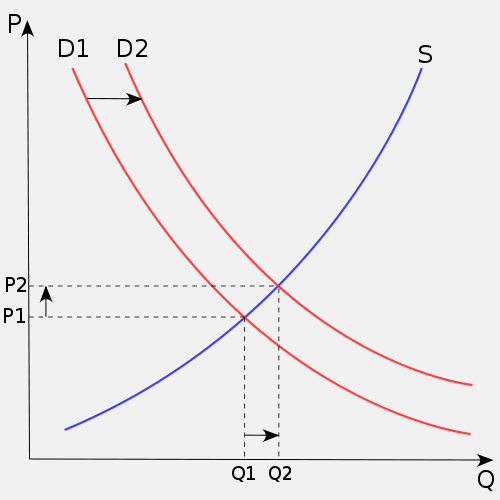 Guess what? We’re not the only ones who think Burgundies are fabulous. To quote Michael Jackson, “you are not alone.”
Guess what? We’re not the only ones who think Burgundies are fabulous. To quote Michael Jackson, “you are not alone.”